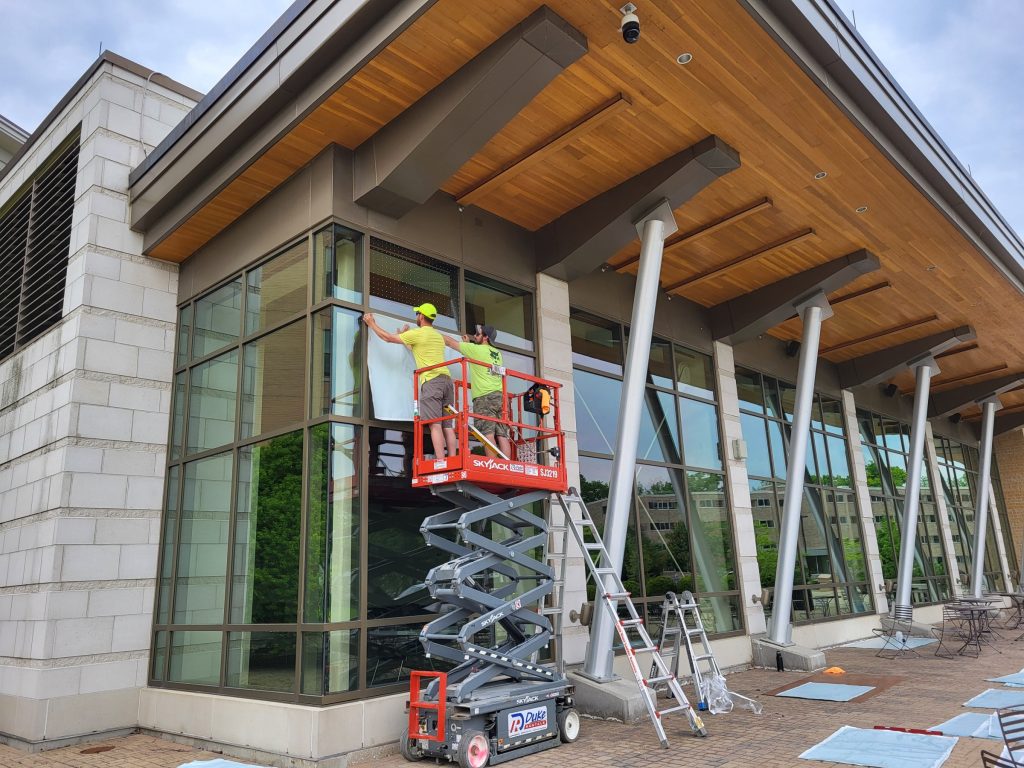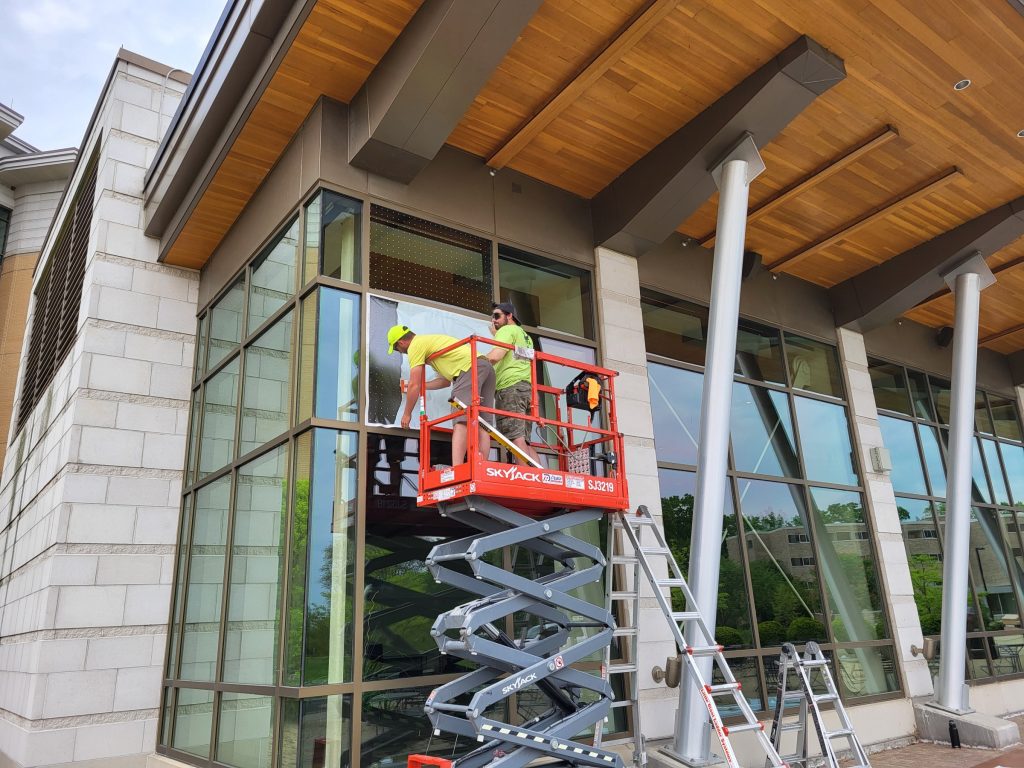Every year over a billion birds die from window strikes. Natural Resources Institute Financial Specialist Krysta Koralesky said this was one of the main reasons she chose to get bird-safe windows on Dejope Residence Hall as her Master Naturalist capstone project.
“[Birds flying into windows is] one of the main causes of bird deaths in the U.S.,” Koralesky said. “And then the other [main] cause is house cats, from people letting their cats outside. These are two human-caused things.”

This concept really struck Koralesky, who describes herself as an animal lover. Determined to do something about it, Koralesky joined the Southern Wisconsin Bird Alliance’s Bird Collision Corps (BCC).
“I guess it just kind of got to me, and it’s happening right on campus where I am every week,” Koralesky said. “Even before I knew about the [BCC], I would see birds laying on the ground that had obviously flown in the window and just felt bad, and like, ‘Oh, is there anything we can do?’ ”
Through her position at NRI, Koralesky took the Wisconsin Master Naturalist training last year. The training involves going to classes, listening to speakers, and completing an individual capstone project that is presented to the class on the last day.
“During the class, one of the speakers was Brenna from Southern Wisconsin Bird Alliance, formerly Madison Audubon,” Koralesky said. “And Brenna talked about the Bird Collision Corps program that I had heard of before, and so I thought that was interesting.”
So Koralesky started volunteering with the BCC. Once a week she walks around campus in a specific area to look for any birds that had flown into the windows during the previous night, and were then dead on the sidewalk.
“It’s one day a week in the spring and in the fall during migration; you pick a day, and you pick your area of campus buildings that you want to monitor, and you walk around and look for dead birds in the morning, anytime before 9 a.m.,” Koralesky said.
As she was volunteering, Koralesky was also thinking about what she wanted to do for her Master Naturalist capstone project. She remembered a previous campus project had installed bird-safe windows in Ogg Residence Hall, and she wondered if she could do something like that.

The money for the windows in Ogg came from the Green Fund; a program through the Office of Sustainability that gives money to students’ sustainability projects on campus. Since Koralesky is not a UW–Madison student, she worked with two student clubs—The Wildlife Society and the Audubon Society.
“I was able to talk to [the students] and the Office of Sustainability, and we had a meeting, and we said, ‘What about the Dejope dorm building?’ ” Koralesky said. “It’s along the lakeshore, and we have data from the Bird Collision Corps that shows that birds are flying into the windows and they’re dying.”
The two student groups completed and submitted the Green Fund application with Koralesky’s help, and the funding was approved. And a couple of months ago, they installed bird-safe dots on the windows of Dejope.
“That was really exciting,” Koralesky said. “It actually happened and came to fruition.”
Koralesky is hoping to keep this momentum going, setting her sights on the Microbial Sciences building, which is well-known in the bird collisions community as a significant source of window strikes.




